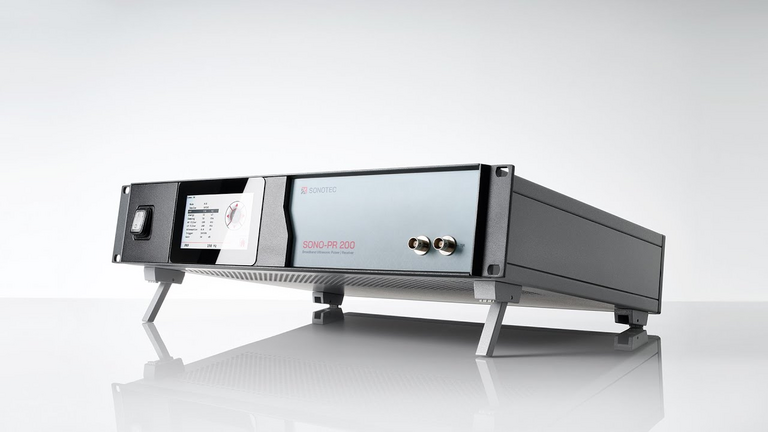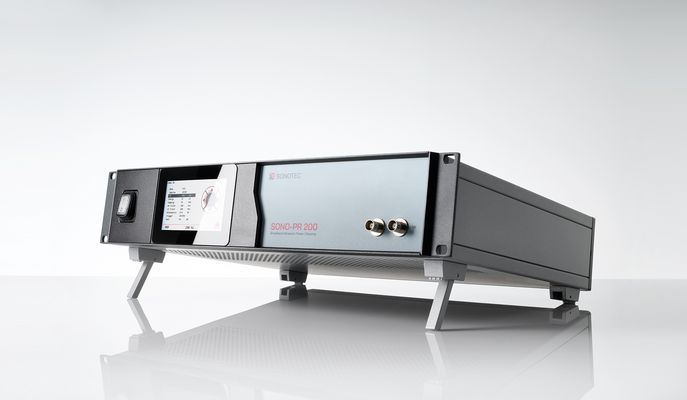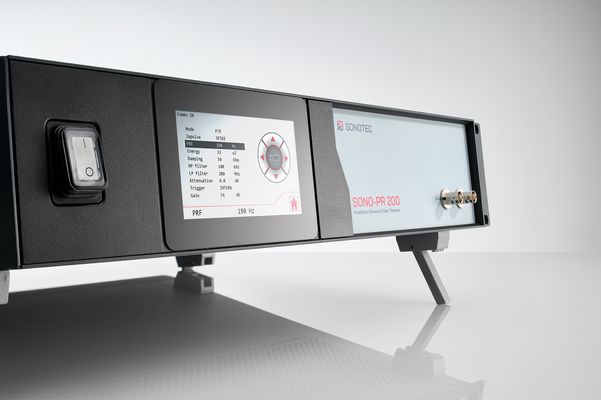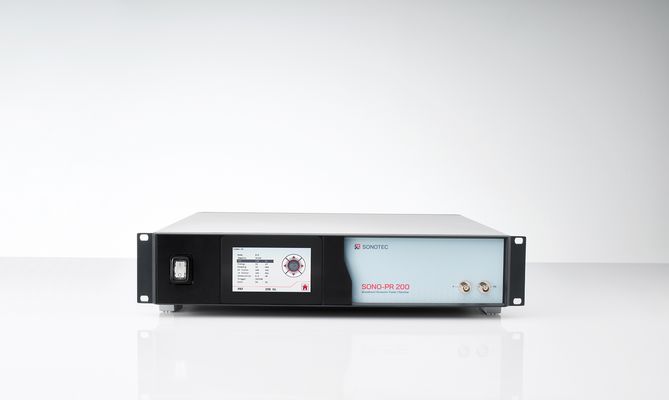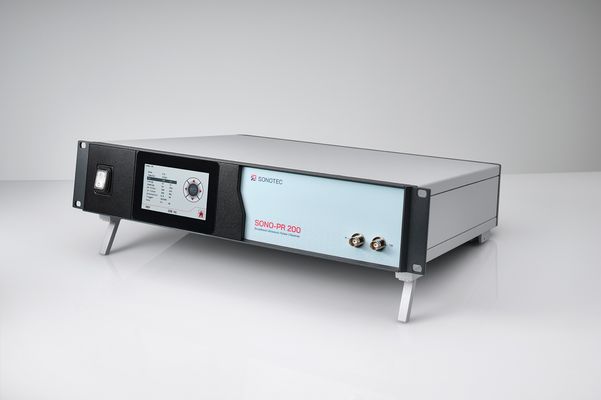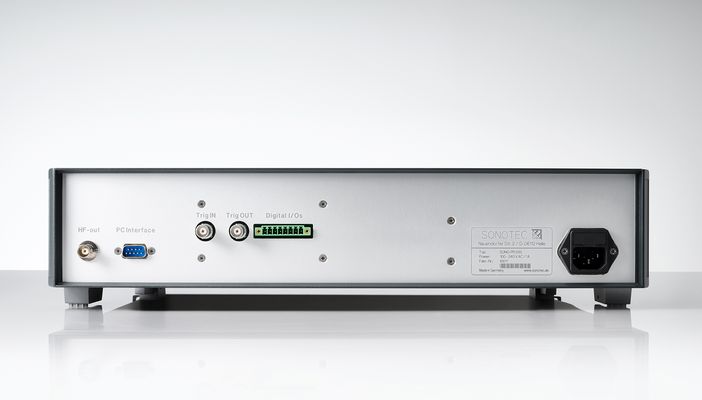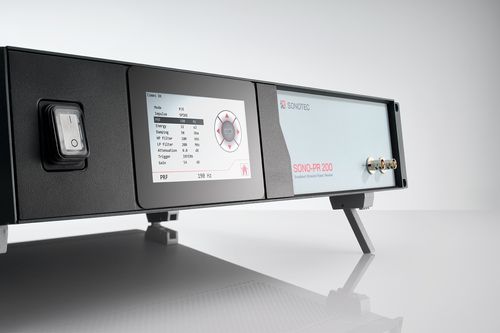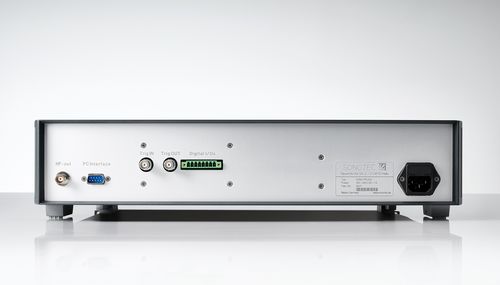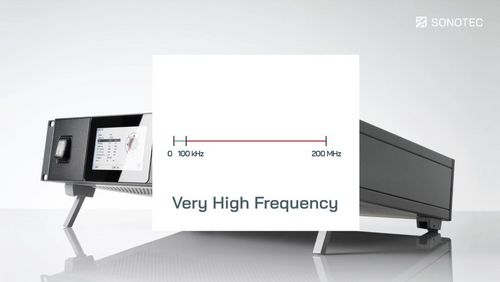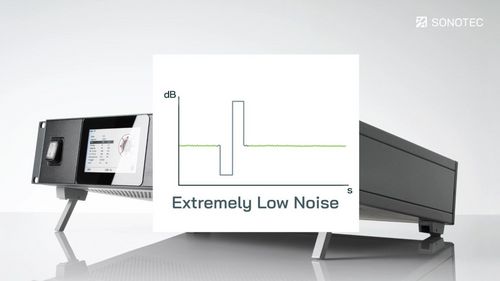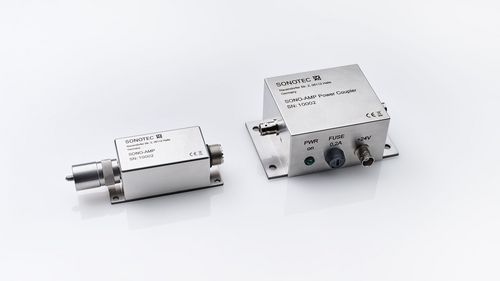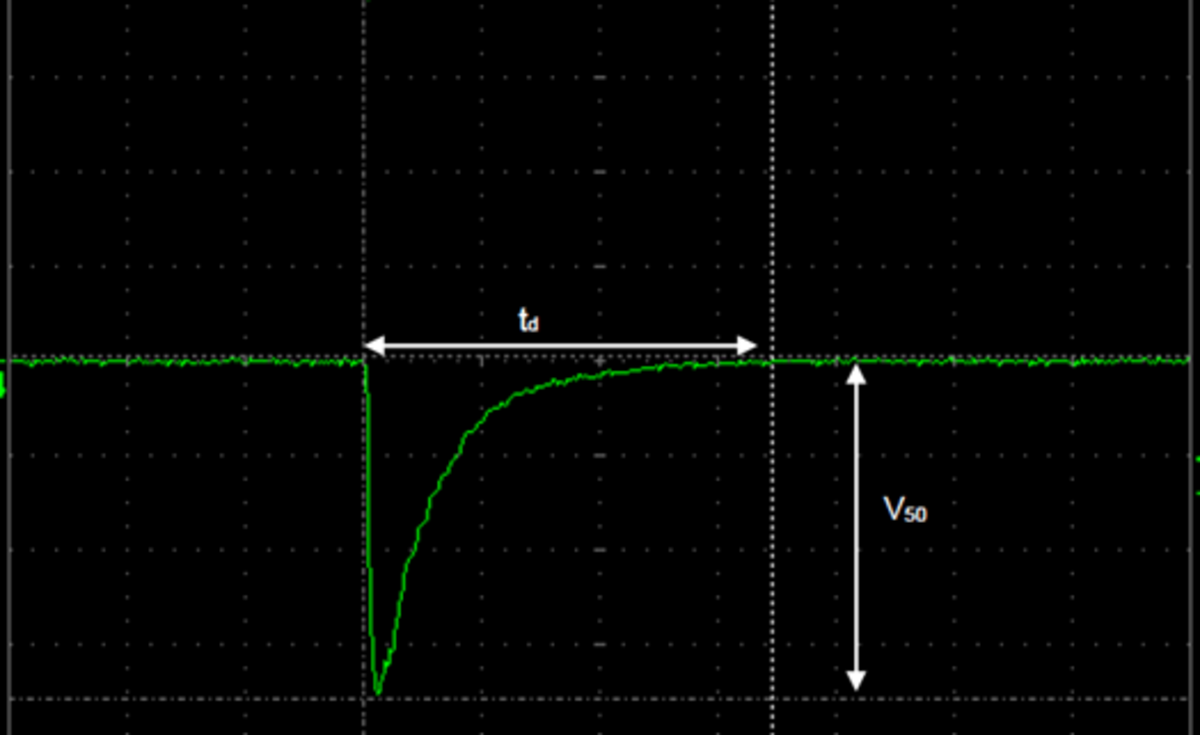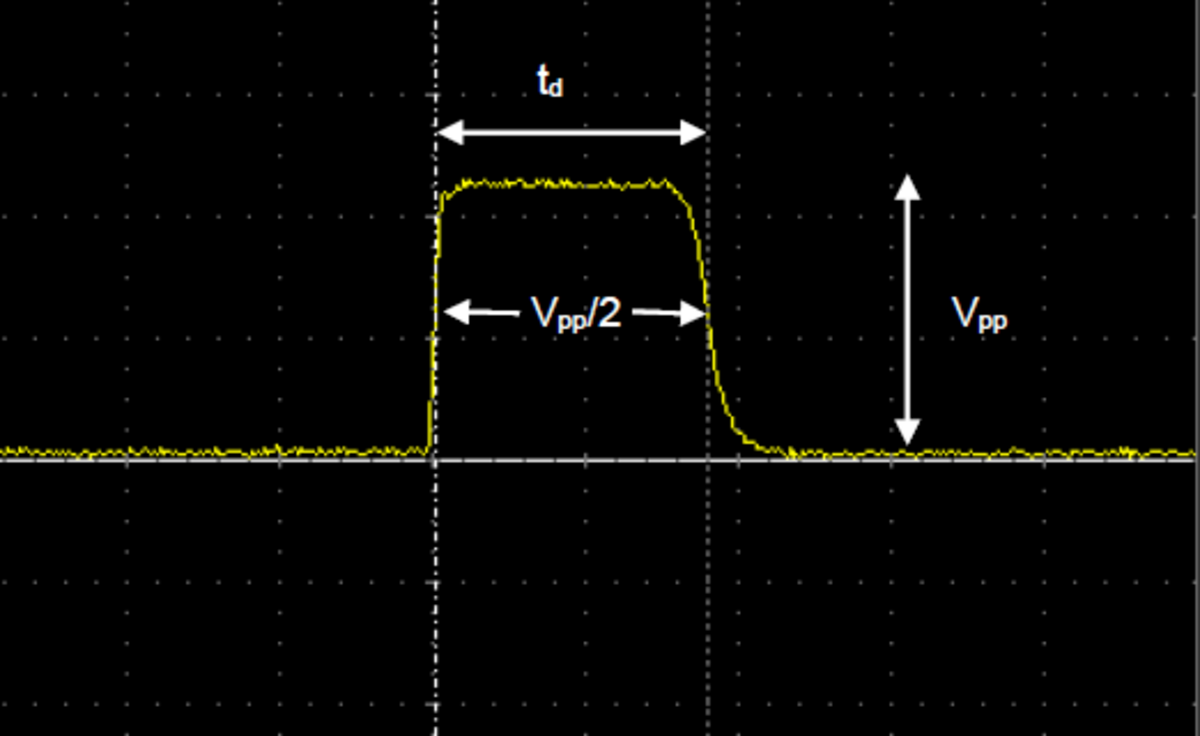SONO-PR 200
Pulser-Receiver for Ultrasonic Testing
With an extremely wide frequency range of up to 200 MHz, the SONO-PR 200 ultrasonic pulser-receiver covers various Ultrasonic Testing applications. It can be used on a wide range of materials for wall thickness measurements to immersion technology and squirter applications, as well as acoustic microscopy. The possibility of remote control via serial interface, various trigger options as well as digital inputs and outputs make the SONO-PR 200 ideal for integration into automated testing facilities. This pulser-receiver reliably replaces the 5900PR.
Ultrasonic Probes
SONO-AMP Pre-amplifier optionally available
By adding the SONO-AMP pre-amplifier, a gain of max. 74 dB can be achieved. In combination with the SONO-AMP, the system achieves an extremely low inherent noise of < 1 nV/√Hz. Tests can also be realized under challenging conditions.
Applications
More about our NDT Products
Do you have any questions?
Feel free to contact us! We will be happy to help you.

